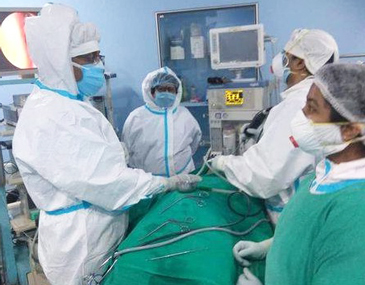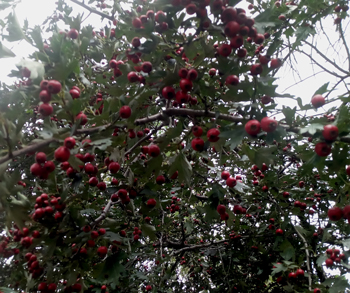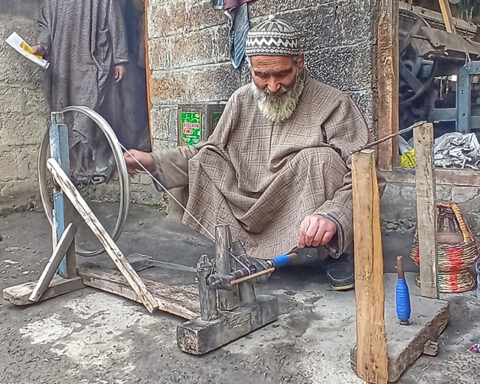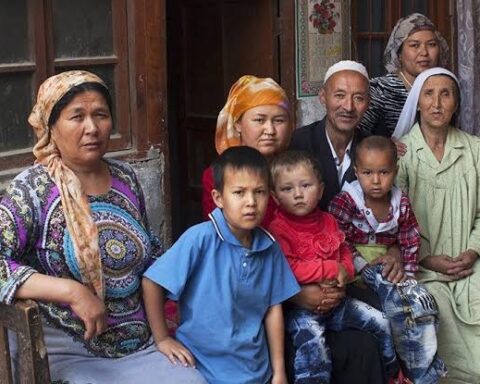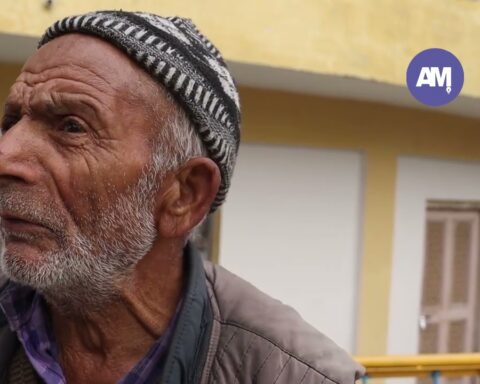With a livelihood built in the open fields of Ganderbal district, Meema, aged 28, comes from the nomadic community of Gujjars, living in a tent-built house with her husband and two toddlers, Zulfikar and Tahira, aged five and three respectively. In an ongoing era where the dependence of treatments heavily relies on the hospitals, doctors and medicines with as per the National Health and Family Survey (NHFS-5), the percentage of births by C-sections in public and private health facilities in Jammu and Kashmir having reached to an alarming data of 82.1% (private) and 42.7% (public), Meema however narrates how she gave birth whilst being entirely distant from the above widely recognized factors mandatory for childbirth in modern times.
“My deliveries did not take place at any hospital”, Meema shares. “In Bandipora, there is a well known Hakeem, known for his natural treatments and cures for ailments. For people like us, he is our doctor. He doesn’t even charge much and prescribes us medicines only when seriously needed, like during labour pains or infections. Both my children and were born healthy. I didn’t even have to take any medicines post my delivery”, she added.
Her decision to opt for a natural delivery solidified after she claims to have “lost all faith” in the “modern day healthcare centres and healers” on the grounds of “greed” and “extreme impoliteness” from few doctors and hospitals that no longer prioritise the health and well being of patients but instead “charge colossal amounts of money” for the surgeries that they tell say is convenient without revealing much. “I was once advised by a hospital in Habbak to visit another big hospital where I would be operated. They told me it was necessary to get admitted 15 days prior to the surgery. But I didn’t go”, she informs. “Instead I got treated by the same Hakeem and by Allah’s grace I was cured. I don’t believe in Cesarean”, she adds, “I am so thankful I didn’t listen to them because I feel healthier than ever.”
The World Health Organization (WHO) revealed the ideal rate for Cesarean to be between 10-15%. Since then, Cesarean has become increasingly common in both developed and developing countries. According to International Cesarean Awareness Network (ICAN), the overall C-section rate is expected to increase with almost one-third (29%) of all births occurring with cesarean section by 2030.
J&K was recorded amongst the top five states showing higher C-section deliveries including Kerala (42.4%), Andhra Pradesh (42.4%), Lakshadweep (31.3%) and Goa (39.5%).
Gynaecologist and Obstetrician, Dr. Humaira Tabbasum states that Cesareans have become elective procedures based on “convenience instead of medical necessity”. “It is indeed being performed recklessly in Valley despite the cost being higher than the fee for a natural birth, lack of awareness being the major cause of this issue”, Dr. Tabbasum highlighted. She pointed out the need of “proper counselling of patients and attendants” is to avoid the rising rate.
Dr. Tabbasum elaborates on some major causes of Cesarean existing like “fear of Normal Vaginal delivery (NVD), pain and the prenatal outcome”. She highlights the complications like placenta previa (central), vaginal obstruction, cephalopelvic obstruction, advanced carcinoma cervix, fetal distress, no progress of labour, malposition/malpresentation, comorbidities, hypertension, etc., too enforce the decision of Cesareans.
However when it comes to the preferences of the patients, Dr. Tabbasum stresses how a patient’s choice has played a major role in the abrupt rise of C-section in the valley, in some hospitals. “They believe it to be safer for the baby since it is a painless mode of delivery and less tedious. While C-sections are necessary to save lives, they are also linked to increased complications. So women must be encouraged to consider try vaginal birth if conditions allow”.
She further informs that causes like “late marriages, safety concerns related to health risk, fear of childbirth, negative experience of previous childbirth, sedentary lifestyle, improved socio-economic status, reliance on science and surgery, access to biased information, low doctor-patient ratio” too have decelerated the rate of NVD in valley.
In some cases, the complications enforcing the implementation of C-sections, like in the case of a 32 year old Qurat-ul-Ain, who delivered her twins three years ago shares her experience stating that even though the process being “most appropriate” in her case, would not have been her personal preference. “My babies were in breach and transverse position so there was no better option than this. But it was like the worst nightmare because the back pain and the scar remain with you throughout your life. One is not able to sleep for months afterwards as the pain with this deep cut is unimaginable”, she added.
For Tasleema Fayaz (name changed), a middle-aged teacher currently expecting her second child being seven months pregnant, reveals how despite the conditions in her first pregnancy revealed showed no signs of complications for Cesareans, she highly preferred Cesarean over natural delivery. “I understand that vaginal delivery is a healthier option specifically considering the post delivery benefits compared to C-sections but I just cannot imagine the pain I would have to suffer at the time of a vaginal birth. Besides it is common these days for Cesareans to be opted”.
Comparing the cases of urban and rural lifestyles, with examples like Meema, coming from a background with low education to Tasleema, a teacher who despite aware of the causes and implications of Cesareans still opted for Cesarean, it becomes evident that requirement of awareness in both rural and urban lifestyles is needed for immediate implementation of large numbers in possible humanised births.
NFHS-5 reveals more than half of the deliveries in urban Jammu & Kashmir take place through Cesareans. About 54.7% of C-section deliveries take place in urban Jammu and Kashmir with a literacy rate of about 77.12% compared to 37.8% C-sections in the rural areas with a literacy rate of about 63.18%.
The National Rural Health Mission (NRHM) aims to address the health needs of rural population; especially the vulnerable sections of society by the Govt. of India through a band of community based functionaries, named as Accredited Social Health Activist (ASHA) to fill this void. In 2019, the Press Information Bureau, Ministry of Health and Family Welfare reported a total of 1047324 ASHAs engaged under NHM in India where about 12356 ASHAs are present in J&K.
Amongst the many core guidelines, ASHA takes steps to create awareness and provide information to counsel women on birth preparedness, importance of safe delivery, breastfeeding and complementary feeding, immunization, contraception and prevention of common infections and care of the young child.
Further, emphasizing the need of awareness in maternal health information, Dr. Tabbasum advices that “strengthening the facilities at the grass root level” is necessary in order to decrease the load on the tertiary care centres.
“There should be a proper implementation of the various Govt. programmes like JSSK, LaQshya to facilitate vaginal delivery. Counselling regarding the antenatal visits, lifestyle modifications in order to prevent diseases like hypertension, diabetes should be done. Moreover, the mother should be made aware regarding the complications of C-sections like incisional hernia, scar rupture etc”, Dr. Tabbasum added.

